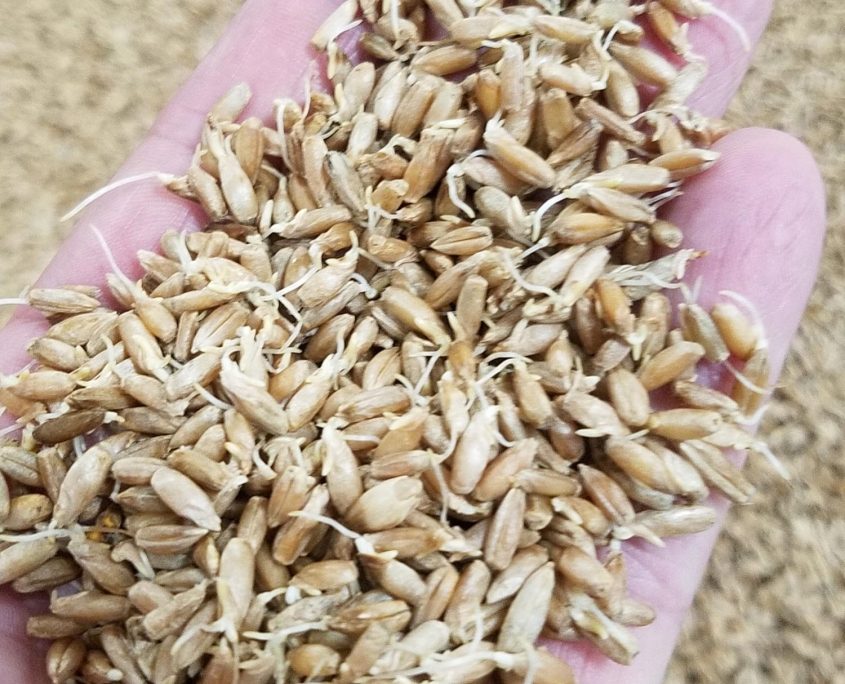In the simplest terms, malt is the soul of craft beer and artisan spirits. It is created by steeping, germinating, and kilning small grains to change their chemical composition and flavor. The object of the malting process is to manage the enzymatic digestion of the cell walls inside each kernel as they are converted into starches and simple sugars.
Regardless of batch size, malting requires seven days to complete. The success of each step builds on the one before it. The end result is a product that evokes the distinct flavors of Southeastern terroir.
Types of Grain
Barley is the most common grain used for malt. To make our malt styles, we use different types of barley as well as other grains such as rye, wheat, corn, and oats.
2-Row Barley
2-row barley is a recent addition to our portfolio. We currently work with Violetta and Calypso for our 2-row malts. We are in the process of testing Flavia and Scala. Each of these barley varieties has a distinct flavor profile and unique agronomic traits.
6-Row Barley
We’ve worked with Thoroughbred Barley since we started in 2010. Originally developed by Virginia Tech, it has been successfully grown for many years. The unique grainy, sweet flavor is utilized in farmhouse ale programs throughout the South.
Rye
We’ve been working with an heirloom rye variety called Wrens Abruzzi since 2011. This variety has traceable origins back to 12th-century Abruzzi monks in Italy. The finished malt produces a unique, spicy character with a hint of citrus oil in the finish.
Wheat
We work with a modern variety of wheat called Viper. After years of chasing heirlooms, we decided to focus on this variety because it offers superior disease resistance and good yields for our farm partners. It has also received high marks from the artisan bread-baking community around Asheville. Our brewers love it for its sweet, earthy flavor and high extract levels!
How Malt Affects Flavor
Malt is responsible for the color, body, and mouthfeel of beer and spirits.
Depending on the chosen recipe, malt can contribute flavors including but hardly limited to biscuit, toast, spice, toffee, and fruit. We set the table for flavor development by controlling the level of modification that occurs during germination. This modulation continues during the kilning phase, where grassy flavors can be enhanced with cooler temperatures. Warmer temperatures can accentuate notes of sweeter toffee and freshly baked bread.
Bring out the local flavor of your next project.
We love a challenge! Craft brewers and artisan distillers, we invite you to come to us with your ideas and inspiration. Working together, we can channel your passion into a process to create unique custom malts specific to your brewhouse. Whether you want an origin-specific Pilsner malt or maybe a specialty smoked malt, we can make it happen.

